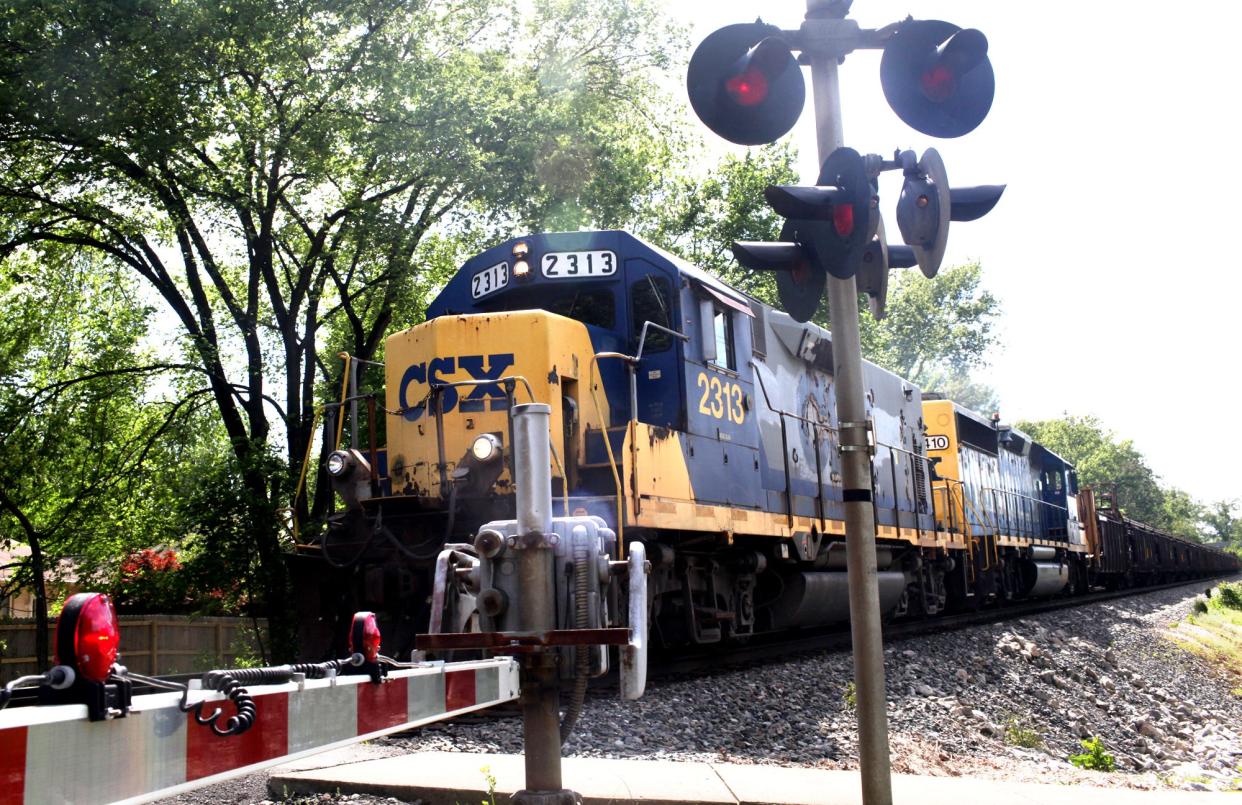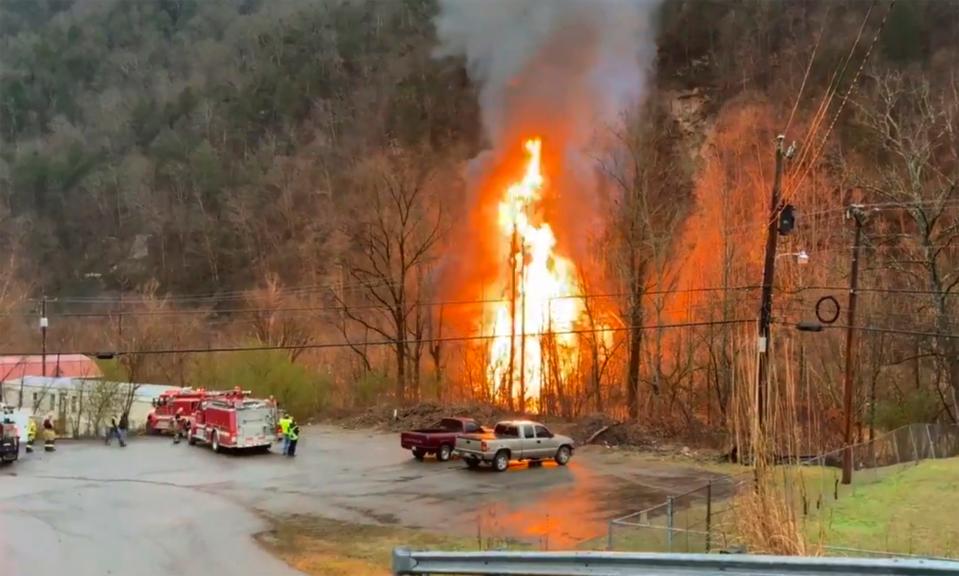Kentucky's 5 costliest hazardous material transportation incidents of the past decade

Hazardous materials travel Kentucky's roads and railways every day.
Usually, these trips go off without a hitch. When they don't, the consequences can be dire.
Here are the five costliest hazardous material transportation incidents in Kentucky over the past decade, adjusted for inflation and based on data from the U.S. Pipeline and Hazardous Materials Safety Administration.
Hazmat shipments: Huge amounts of hazardous materials pass through Midwest every day. How safe are residents?
Draffin. Feb. 13, 2020. Damages: $11.8 million

Early in the morning in Eastern Kentucky, a mudslide swept onto the railroad tracks ahead of a southbound CSX train, causing a derailment at Draffin in Pike County.
Two tank cars released 38,400 gallons of denatured ethanol, according to an investigation by the National Transportation Safety Board, which mixed with the train's diesel fuel and caught fire. Runoff from the disaster went into nearby Russell Fork, in the Big Sandy watershed.
The train crew escaped with minor injuries.
The incident was attributed mainly to extreme weather conditions. In the two weeks leading up to the incident, the area had seen 300% percent of its normal amount of rainfall.
Falmouth. Aug. 10, 2016. Damages: $3.7 million
In 2016, a train carrying sulfuric acid derailed near Falmouth, about halfway between Lexington and Cincinnati in Pendleton County.
Sulfuric acid, a highly toxic chemical, can be explosive in high concentrations, and the derailment left a loaded tank of the chemical lying on the tracks.
The incident triggered evacuations for 585 people, and shelter-in-place orders for another 1,800.
No hazardous material was released, according to official reports. But response costs, combined with damages for the carrier, totaled into the millions.
Georgetown. March 18, 2018. Damages: $3.7 million
In 2018, two Norfolk Southern trains collided head-on about three miles outside Georgetown in Scott County after one went through a stop signal, according to a Federal Railroad Administration report.
Both were carrying hazardous materials. The collision resulted in the release of "an unknown amount of Sulfuric Acid solution," according to the report, along with 5,700 gallons of fuel.
Hundreds of nearby residents were evacuated. One of the train's engineers, "covered in fuel and sand," struggled to exit the train but eventually made it out despite injuries, as a fire sparked and continued to burn for two hours.
More: Trains are becoming less safe. Why the Ohio derailment disaster could happen more often
Lexington. May 30, 2018. Damages: $1.9 million
On a spring morning in a Lexington trailer repair shop, a mechanic was attempting to remove a sticker from a UPS truck transporting dissolved acetylene, a flammable gas, to Connecticut.
Scraping the sticker wasn't getting the job done, so the mechanic tried to heat the adhesive with a butane torch.
The resulting explosion destroyed "the entire trailer and much of the shop," according to a federal report. One of the cargo cylinders had a leak, and the accumulated gas fueled the explosion.
The mechanic, truck driver and six other UPS freight employees were sent to the hospital. There were no deaths from the explosion.
Owensboro. May 31, 2013. Damages: $667,000
A truck hauling 8,500 gallons of gasoline near Owensboro went through a highway guardrail, tumbling off the road and taking trees along with it.
The truck came to a rest in the cornfields of farmer Joe Goetz, but not before it had destroyed some of his crops.
The truck also spilled fuel, though officials determined it was coming from the truck, not the tanker it was hauling. The leaked fuel caused contamination in Goetz's soil, according to a federal report.
Emergency responders had to cut through the roof of the truck to remove the driver, who was then taken to a hospital.
Katherine Oung contributed data reporting.
Connor Giffin is an environmental reporter for The Courier Journal and a corps member with Report for America, a national service program that places journalists in local newsrooms to report on under-covered issues. The program funds up to half of corps members’ salaries, but requires a portion also be raised through local community fundraising. To support local environmental reporting in Kentucky, tax-deductible donations can be made at courier-journal.com/RFA.
Learn more about RFA at reportforamerica.org. Reach Connor directly at cgiffin@gannett.com or on Twitter @byconnorgiffin.
This article originally appeared on Louisville Courier Journal: Kentucky's 5 costliest hazmat transit incidents of the past decade

